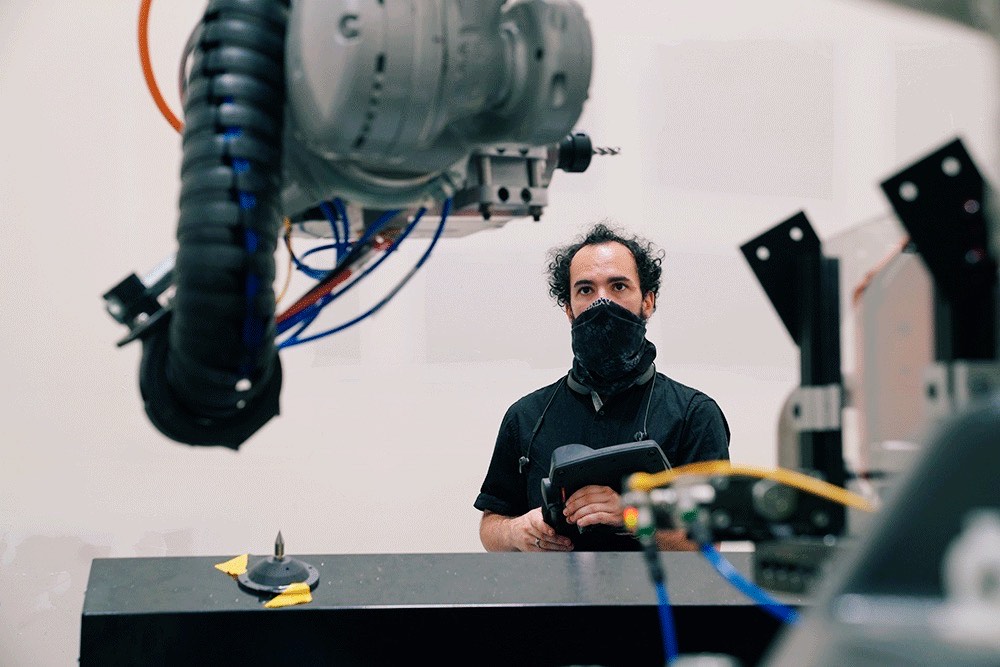Additive manufacturing enabled rocket maker Relativity Space has landed its first orbital launch contract from the US Department of Defense (DoD) to launch a payload into low-Earth orbit (LEO) using its fully 3D printed Terran 1 launch vehicle.
The contract forms part of the Defense Innovation Unit’s (DIU) efforts to identify suitable commercial solutions for launch systems capable of carrying between 450-1,200kg to LEO, in order to open up low-cost, responsive access to space “as a service”.
The deal sees the DoD become the ninth launch customer for Relativity Space, and the third announced contract from the US Government.
“It is an honor to continue to serve the US Government and build upon our nation’s leading abilities in space with Relativity’s first DoD satellite launch contract award,” said Tim Ellis, CEO and Co-founder of Relativity Space. “The Defense Innovation Unit is a group whose innovative approach aligns with the work we are doing at relativity to revolutionize the future of aerospace.
“I’m excited for what our teams will accomplish together as we look forward to launching our first DoD payload set.”

Commercial solutions for space “as a service”
The contract between Relativity Space and the DoD was awarded as a Space and Missile Systems Center (SMC) Launch Enterprise follow-up to the DoD’s Space Test Program (STP) Rapid Agile Launch Initiative (RALI). The initiative seeks to recognize innovative commercial technologies from American companies that are capable of granting low-cost and responsive launch solutions for payloads to orbit.
To this end, the DIU is working to identify launch partners with systems that are equipped with a payload capacity between 450-1,200kg in order to open up both low-cost and responsive access to space “as a service”. According to the DIU, Relativity Space’s Terran 1 3D printed launch vehicle meets this criteria, although a date for the launch has not yet been announced.
Earlier this year, the DoD released its first-ever additive manufacturing strategy with the aim of manifesting a common vision for the use of 3D printing within the nation’s defense program. The strategy outlines five strategic goals to broaden the adoption of 3D printing throughout the defense sector and capitalize on the potential benefits of the technology.
The strategy will see the DoD continue to work with related agencies such as NASA, the Department of Energy (DoE), and the Federal Aviation Administration (FAA) to both leverage their work and identify joint projects related to 3D printing.

The 3D printed Terran 1
Having entered the private space exploration market in 2015, Relativity Space has since been developing its Terran 1 rocket in-house using its Stargate 3D printer, with the inaugural launch of the rocket scheduled for later this year. The company raised $500 million worth of investment last year, demonstrating high investor confidence in Relativity’s progress ahead of the launch.
Relativity’s Stargate printer is operated by the interaction of several robotic arms and can produce a whole Terran rocket in just 60 days. In June 2019, Relativity was given permission to build a 220,000 square foot rocket building factory at NASA’s Stennis Space Center, providing it with fresh testing and assembly space. Last year, the firm also moved to a new Californian HQ to ramp up its production.
The company has recently earned several high-profile contracts, with its Terran 1 chosen by satellite producers Iridium Communications and Telesat to fire their small satellites into LEO. Similarly, defense contractor Lockheed Martin has selected the Terran 1 for an upcoming NASA cryogenic testing mission, which is due to take place in 2023.
Most recently, Relativity secured a $3 million NASA contract to launch multiple small satellites into LEO, awarded as part of NASA’s Launch Services Program (LSP). By 30 June 2022, Relativity will deploy its Terran 1 rockets to fire various cubesats, microsats, and nanosatellites into orbit for exploration, education, and investigation purposes.

Subscribe to the 3D Printing Industry newsletter for the latest news in additive manufacturing. You can also stay connected by following us on Twitter and liking us on Facebook.
Looking for a career in additive manufacturing? Visit 3D Printing Jobs for a selection of roles in the industry.
Featured image shows Relativity Space’s Stargate 3D printing technology. Photo via Relativity Space.



